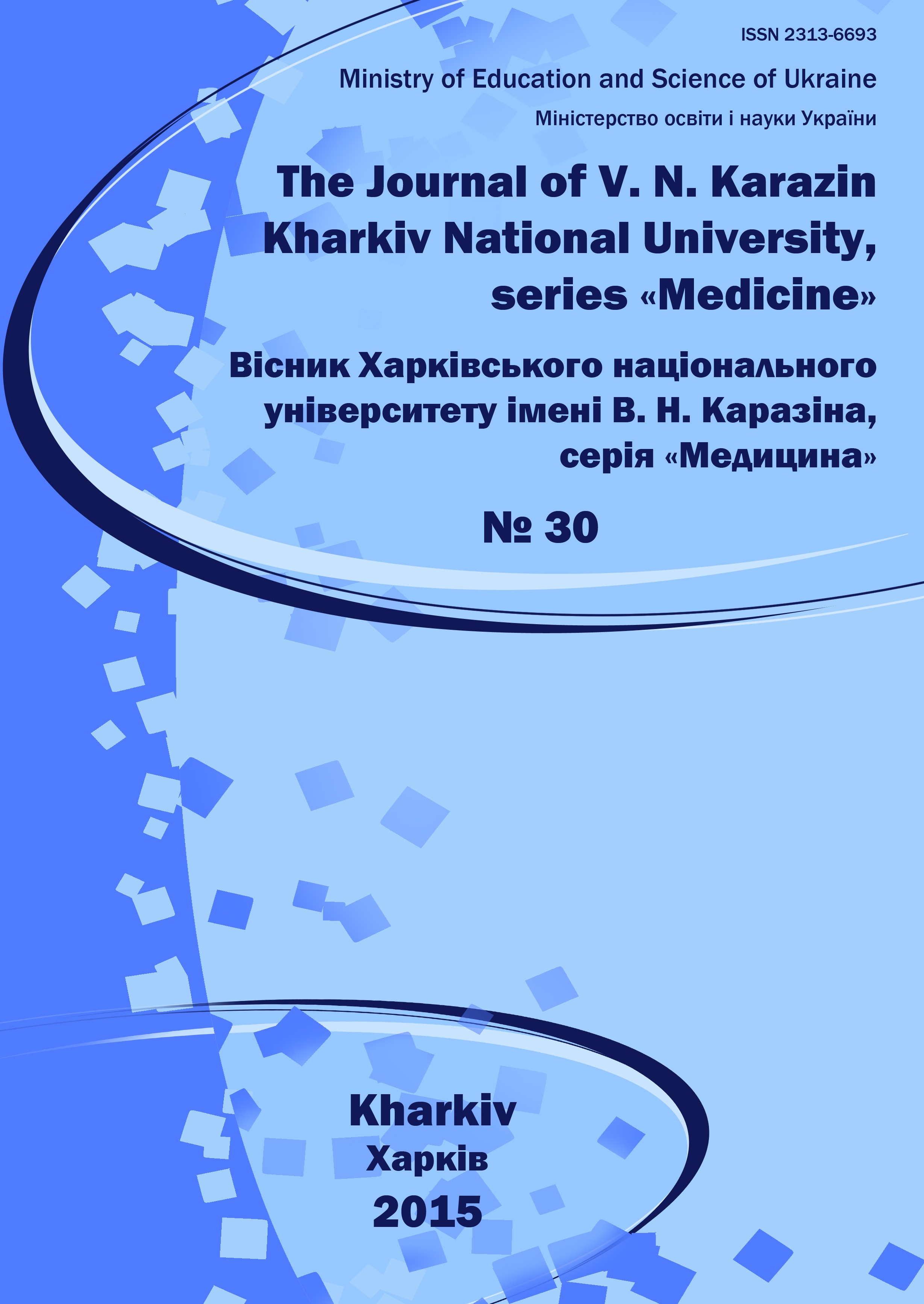EFFECTS OF PERMANENT PACEMAKER ON THE PULSE PRESSURE IN PATIENTS IN EARLY POST-IMPLANTATION PERIOD
Abstract
The frequency of pulse pressure (PP) and patients migration between PP classes in 220 patients (110 men and 110 women) in average age (70 ± 9) years in the early period after pacemaker implantation (3-5 days) in VVI/VVIR, DDD/DDDR, CRT-P/D pacing modes with atrioventricular block, bundle brunch block, sick sinus node syndrome, permanent bradysystolic form of atrial fibrillation and dilated cardiomyopathy were studied. The results showed that the implantation of the pacemaker helps to normalize PP in 79 % of patients with the prevalence in class III due to reducing of PP in II, IV and V classes in the VVI, DDD, DDDR pacing mode, and there is no significant effect of it on the migration of patients in PP classes in VVIR and CRT mode. Saving in 21 % of patients II, IV and V class of PP after pacemaker implantation shows the necessity in complement drug therapy.Downloads
References
2012 ACCF/AHA/HRS Focused Update Incorporated Into the ACCF/AHA/HRS 2008 Guidelines for Device-Based Therapy of Cardiac Rhythm Abnormalities: A Report of the American College of Cardiology Foundation// American Heart Association Task Force on Practice Guidelines and the Heart Rhythm Society: Circulation. – 2013. – № 127. – P. 283–352.
Bringole M. 2013 ESC Guidilines on cardiac pacing and cardiac resynchroniation therapy: Addenda / M. Bringole, A. Auriccho, G. Baron-Esquivias [et al.] // European Heart Journal. – 2013. – № 15. – P. 1070–1118.
Maltseva M.S. Functional parameters of blood circulation in patients during first six months of right ventricular pacing in QTc interval duration classes / M.S. Maltseva, D.E. Volkov, D.O. Lopin, M.I. Yabluchansky // Journal of V.N Karazin’ KhNU № 28 (1141). – 2014. – P. 17–22.
Shanina I.V. Functional blood circulation values in the first six months of permanent pacing in different stimulated QRS complex duration classes / I.V. Shanina, D.E. Volkov, N.I. Yabluchansky // Journal of V.N Karazin’ KhNU. – 2014. – № 28 (1141). – P. 33–37.
Franklin S.S. Is pulse pressure useful in predicting risk of coronary heart-disease? / S.S. Franklin, S.A. Khan, N.D. Wong [et al.] The Framingham Heart Study// Circulation. - 1999. – № 100. P. 354–360.
Borrell L.N. The Effect of Pulse Pressure on All-Cause and Cardiovascular-Specific Mortality Risks in US Adults / L.N. Borrell, L. Samuel // Ethnisity and Disease. – 2015. – № 25 (2). – 152–156.
Jolda-Mydlowska B. Pulse pressure as a prognostic indicator of organ damage in patients with essential hypertension / B. Jolda-Mydlowska, M. Kobusiak-Prokopowicz, A. Slawuta [et al.] // Pol Arch med Wewn. – 2004. – № 111 (5). – P. 527–535.
Davidovich I.M., Neapolitanskaya T.E. Vliyaniye razlichnykh rezhimov postoyannoy elektrokardiostimulyatsii na sutochnyy profil' arterial'nogo davleniya u lits s ishemicheskoy bolezn'yu serdtsa v sochetanii s gipertonicheskoy bolezn'yu/ I.M. Davidovich, T.E. Neapolitanskaya // Dal'nevostochnyy meditsinskiy zhurnal. – 2012. – № 2. – S. 14–18.
The Journal of V. N. Karazin Kharkiv National University, series Medicine has following copyright terms:
- Authors retain copyright and grant the journal right of first publication with the work simultaneously licensed under a Creative Commons Attribution License that allows others to share the work with an acknowledgement of the work’s authorship and initial publication in this journal.
- Authors are able to enter into separate, additional contractual arrangements for the non-exclusive distribution of the journal’s published version of the work, with an acknowledgement of its initial publication in this journal.
- Authors are permitted and encouraged to post their work online prior to and during the submission process, as it can lead to productive exchanges, as well as earlier and greater citation of published work.




